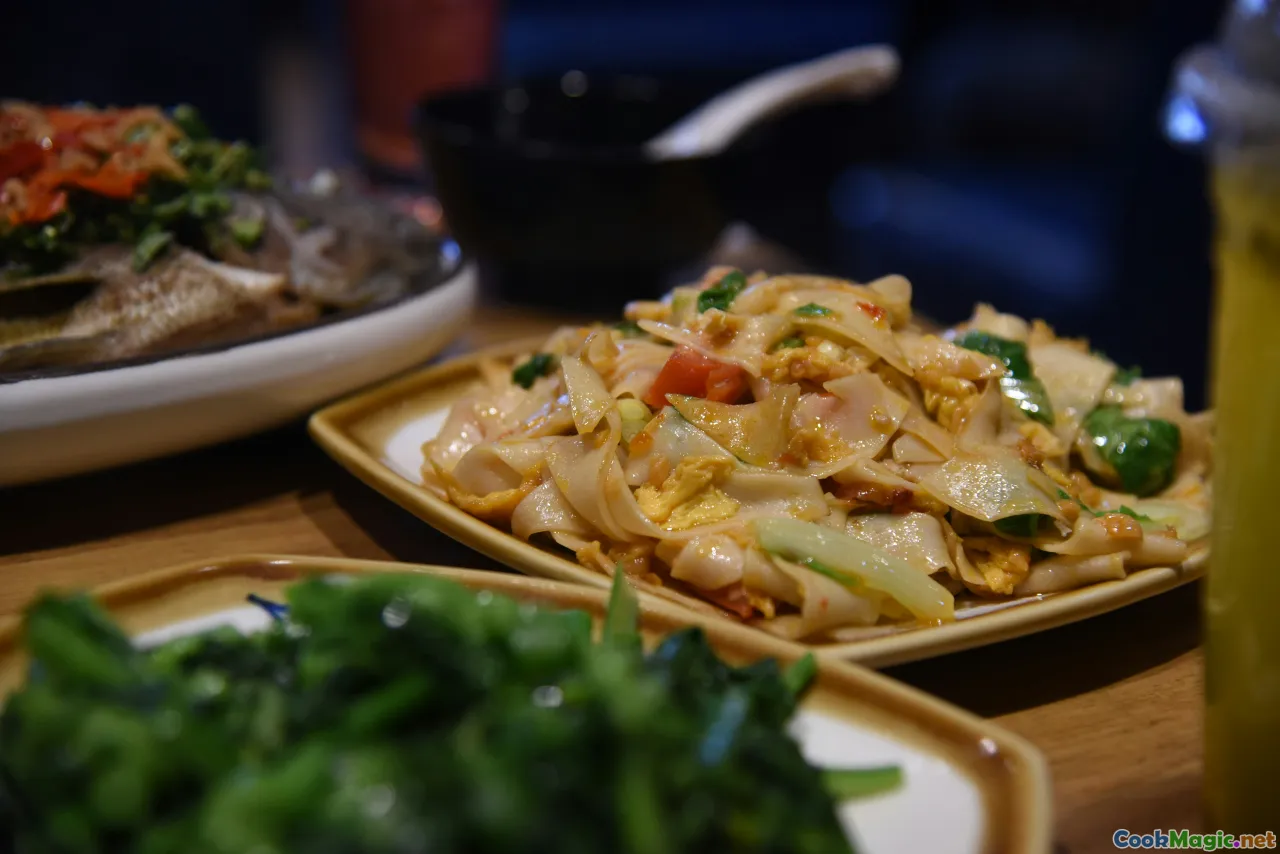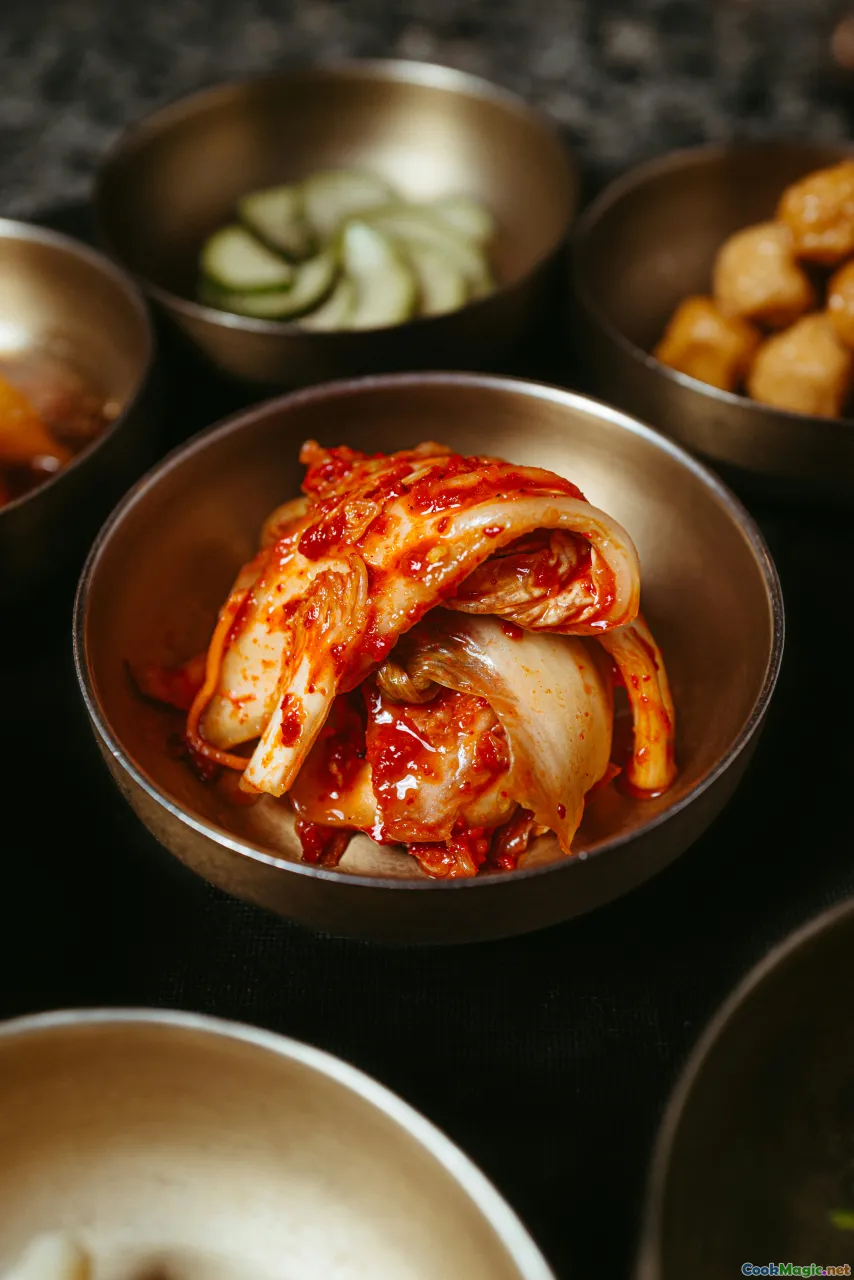Korean Mexican Tacos Unlocking Bold Cross Cultural Flavors
12 min read Explore the vibrant fusion of Korean and Mexican flavors in tacos, showcasing bold, innovative culinary combinations that celebrate cultural diversity. June 19, 2025 21:05
Korean Mexican Tacos: Unlocking Bold Cross-Cultural Flavors
Imagine wandering through a vibrant street market, where the intoxicating aroma of grilled meats mingles with the zing of tangy kimchi and the smoky allure of chipotle peppers. Now, picture this sensory symphony nestled inside a warm, soft tortilla—an exciting fusion of Korean and Mexican culinary traditions. Korean Mexican tacos are more than just a trend; they’re a thrilling gastronomic adventure that celebrates cultural exchange, personal innovation, and the universal language of bold flavors.
Fusion food—the artful blending of two or more culinary worlds—is no longer confined to high-end kitchens or niche eateries. It’s a democratized movement that invites passionate home cooks and professional chefs alike to push boundaries and redefine what comfort food can be. Among these eclectic mashups, Korean Mexican tacos emerge as a shining example of how two seemingly distant traditions can harmonize into something entirely new, vibrant, and satisfying.
In this journey, we’ll delve into the origins of this fusion, analyze beloved dishes, explore authentic techniques, and inspire your own creative ventures in the kitchen. Let’s unlock the bold flavors of Korean Mexican tacos.
The Cultural Roots of Adaptation: A Tale of Two Worlds

The stories behind culinary fusion are often tales of migration, adaption, and community. Mexico’s lively street food scene, characterized by tacos piled high with bold salsas and slow-cooked meats, met Seoul’s vibrant street markets and their dynamic ingredient palettes—kimchi, gochujang, and bulgogi—over decades of migration and globalization.
During the late 20th century, Korean immigrants brought their traditional ingredients and recipes into regions where Mexican cuisine thrived. In Los Angeles, a melting pot of cultures, immigrant communities started experimenting, drawing on shared street food sensibilities and a mutual love for flavorful, handheld meals.
The result? Chefs and home cooks alike began integrating gochujang (fermented chili paste), kimchi (fermented vegetables), and bulgogi (marinated beef) into the staple taco. What emerged was an entirely new culinary genre—Korean taco—which found enthusiastic audiences hungry for novel, multi-sensory bites.
Anchoring Flavors: Core Ingredients and Their Roles

To craft authentic yet inventive Korean Mexican tacos, understanding their building blocks is essential.
- Kimchi: Adds crunchy texture, tangy depth, and umami richness.
- Gochujang: Offers a sweet, spicy, and smoky flavor punch, balancing richness with heat.
- Bulgogi: Thinly sliced beef marinated in soy, pear, garlic, and sesame oil imparts sweet-savory umami.
- Ssamjang: A thick, spicy dipping sauce made from doenjang (fermented soybean paste) and gochujang — perfect for adding depth.
- Fresh herbs and vegetables: Cilantro, scallions, radishes, and lettuce provide freshness and crunch.
- Tortillas: Soft corn or flour tortillas serve as neutral yet tender vessels for these bold ingredients.
Mastering the proportions and harmony among these flavors invites wonder in every bite—spicy, smoky, sour, and sweet in perfect balance.
Crafting the Perfect Korean Mexican Taco: Techniques & Tips

Step 1: Marinate with Purpose
A true Korean taco begins with marinated beef. For bulgogi-inspired flavor, thinly slice flank or sirloin and marinate it for at least 30 minutes, or up to 24 hours for maximum flavor absorption. Ingredients like soy sauce, sesame oil, grated Asian pear (for tenderness and sweetness), garlic, ginger, and a touch of sugar form the marinade’s core.
Step 2: Mastering the Sear
To achieve that irresistible caramelized exterior, grill or pan-fry the marinated meat over high heat until slightly charred and juicy. The smoky edges should sing with flavor—think of the tantalizing aroma wafting through a Korean barbecue house.
Step 3: Kimchi-Infused Salsa
Create a lively salsa that elevates your taco using finely chopped kimchi, diced tomatoes, red onions, and jalapeños. A squeeze of lime and a handful of freshly chopped cilantro tie it all together—bright, spicy, with a touch of tang.
Step 4: Assembling with Care
Warm your tortillas and layer with steak, topped generously with chopped kimchi, a drizzle of gochujang or ssamjang, and finish with shredded lettuce or crisp radishes. A tucked-in wedge of lime and perhaps a sprinkle of toasted sesame seeds can elevate the flavors.
Step 5: The Final Touch
Presentation glues the experience. Serve with small bowls of extra sauces, maybe even pickled vegetables or a side of Korean-style spicy scallion salad, for an immersive sensory journey.
Comparing Korean Taco Styles: Traditional Meets Trendy

Another way to appreciate Korean Mexican tacos is to examine their various expressions: from the street vendors of Los Angeles selling “Kimchi Tacos” with crunchy lettuce and creamy avocado, to upscale eateries blending Korean ingredients into gourmet tacos with refined plating.
Authentic street-style versionstend to emphasize simplicity—marinated meats, kimchi, spicy sauces—packed tightly into a warm tortilla. Think of it as an accessible, fast-food dynamic.Gourmet adaptations explore textures and presentation—think kimchi-infused aioli drizzle, pickled cucumber ribbons, or even incorporating rice pilaf or kimchi pancake elements into tacos for added complexity.
Understanding these styles allows chefs and food lovers to appreciate the full spectrum of fusion possibilities—serving casual lunches or fine dining experiences that celebrate cross-cultural harmony.
Emotional and Personal Insights: Why These Flavors Matter

For many, Korean Mexican tacos symbolize more than culinary creativity; they resonate with stories of identity, migration, and community. For second-generation Korean Americans, tacos become a canvas to express their dual heritage—combining the comfort and familiarity of Mexican street food with the flavors of their ancestral homeland.
The joy of biting into a well-crafted Korean taco lies in its layers of history—stories of family gatherings, cultural pride, and daring experimentation. It’s an edible affirmation that food isn’t just sustenance but a powerful marker of cultural intersection, evolution, and personal expression.
Sharing these tacos with friends or family creates a bridge between worlds, inviting conversations and understanding that extend beyond the plate.
Innovative Tips for Home Cooks: Creating Your Own Korean Tacos

- Start simple: Use pre-marinated bulgogi or Korean short ribs to save time.
- Explore spice: Mix gochujang with mayo or sour cream to create versatile sauces. Add honey or sesame oil for depth.
- Vegetarian option: Substitute grilled tempeh or tofu coated in Korean spice blend, paired with kimchi and fresh toppings.
- Incorporate traditional rice: A small scoop of seasoned rice inside the taco adds a satisfying base, reminiscent of Korean bibimbap.
- Play with presentation: Use colorful garnishes like pickled radish, sliced Asian pears, or toasted sesame seeds for visual appeal.
Experimentation is key—let personal taste and cultural curiosity guide your creation.
Where to Find Inspiration and Places to Taste

In cities across the US and beyond, inventive Korean Mexican tacos pop up in street carts, food trucks, and refined restaurants. Notable mentions include L.A.’s famed Kogi BBQ, which pioneered Korean-Mexican fusion with its spicy pork tacos and kimchi quesadillas, or Guelaguetza in Los Angeles, offering upscale interpretations.
Food festivals focusing on fusion or street foods often feature-bold creations that showcase the adventurous spirit behind this culinary movement. Engaging with fellow food enthusiasts, trying local hotspots, or even joining online culinary communities provides fresh inspiration.
For the home cook, cookbooks like "Korean Fusion" by chef chefs and blogs dedicated to fusion cuisine serve as repositories of recipes and techniques.
As you explore and experiment, remember: the essence of Korean Mexican tacos lies in their storytelling power, their boldness, and their capacity to unite seemingly disparate flavors in delicious harmony.
Unleash your creativity and savor every bite—the bold cross-cultural flavors await your discovery.









